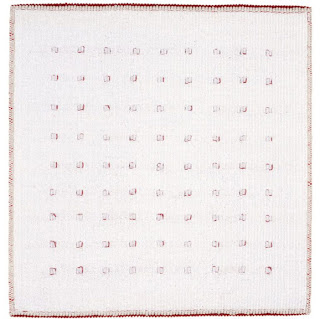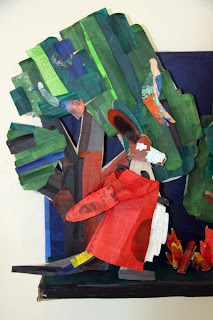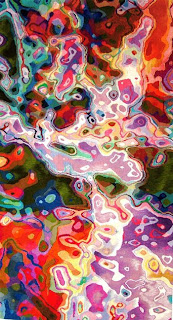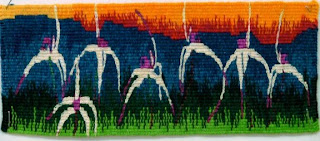
Margaret F. Crowther - Workshop on 3-D Forms |
|
As you may know BTG has widened its membership to include international weavers. We are endeavouring to attract members from around the world to share BTG's vision:
'The British Tapestry Group exists to promote woven tapestry as a
contemporary art form in the UK and internationally, by raising public
awareness through professional exhibitions, networking, regional
initiatives, training and development.'
To this end BTG is holding its first small format tapestry exhibition - Weaving Within - for members only, to be held in 2 venues in Stirling, Scotland, from September 12th to November 8th. The Stirling Smith Art Gallery and Museum, and Historic Scotland's Stirling Castle are the two venues.
Please visit
www.thebritishtapestrygroup.co.uk for more information.
BTG is staging an exciting weekend event on Saturday 12th and Sunday 13th September, with a Conference, Private View and dinner on the Saturday at the Stirling Smith Gallery, and a day of workshops on the Sunday at Stirling Castle. This will give participants a chance to see both exhibitions as well as the exciting studio at Stirling Castle where The Hunt of the Unicorn tapestries are being woven.
Please visit www.thebritishtapestrygroup.co.uk for more information, non-BTG members welcome.
Conference Programme - Saturday 12th September:
JOAN BAXTER
"Tapestry…where do we go from here?"
Joan will give an illustrated talk on her personal view of where tapestry is at the present time, and ways forward in developing the media.
SARA BRENNAN
"My work, its process and inspiration"
Sara's tapestries are an unspoken response to landscape in a reduced and simplified form. She will reflect on past and present work, explaining her ideas, design sources and processes.
RUDI RICHARDSON
"Artists and Weavers - My time with Mark Adams"
Mark Adams was an American artist who utilised painting, stained glass and tapestry in his artistic expression. He started producing tapestries in 1955 after studying with Jean Lurcat.
Rudi wove his designs from 1978 - 1998.
DINA WARD
"Fabulous Tapestries"
Dina's talk illustrates the history of tapestry from its early beginnings to its heyday and beyond with examples from around the world.
Workshop Programme - Sunday 13th September
JOAN BAXTER
Colour
A workshop exploring how the use of multiple threads can create not only vibrant colour, but also texture, mood and atmosphere. Students will work from imagination, real objects and photographic sources. This class is for those who have already done some tapestry. This is a superb opportunity to work with Joan; she is a fabulous colourist and truly knows how to mix colour in subtle and exciting ways. Her experience as a weaver, and her commission work, are testament to this.
MARGARET F. CROWTHER
3-D Forms
Since the 70s Margaret has been interested in using yarns as a sculptural material. The workshop will be suitable for anyone with some experience in basic weaving who would like to be free of the traditional tapestry loom for a day, and explore some ways of creating three-dimensional forms. Margaret has a unique style to her work and this will be a great opportunity to learn new techniques and explore three dimensional works in a friendly and supportive group setting.
ANNE JACKSON
Thinking Through Tapestry
This will take the form of a forum for considering the creative process in woven tapestry, involving a presentation, discussion and some practical input, looking at widening horizons to new sources of inspiration and creativity, including the internet and critical theory. Participants will be encouraged to bring along sketchbook work and spend some time discussing and developing ideas with the workshop leader and other participants. This is perhaps an opportunity to explore new ideas or take other ones forward in a tutorial type of setting.
JO McDONALD
Weaving With Paper
Cutting, tearing, and slicing paper will enable the participant to construct with texture and manipulate a structure into more sculptural shapes. This class is suitable for those with limited experience. Jo will share with the group a variety of uses with paper and how she creates her own unique pieces of work, allowing participants to explore both weaving and paper in a fun and challenging way.
 tapestry2008 wishes everyone a very Happy Christmas, safe holidays and a wonderful 2010, full of weaving!
tapestry2008 wishes everyone a very Happy Christmas, safe holidays and a wonderful 2010, full of weaving!





































